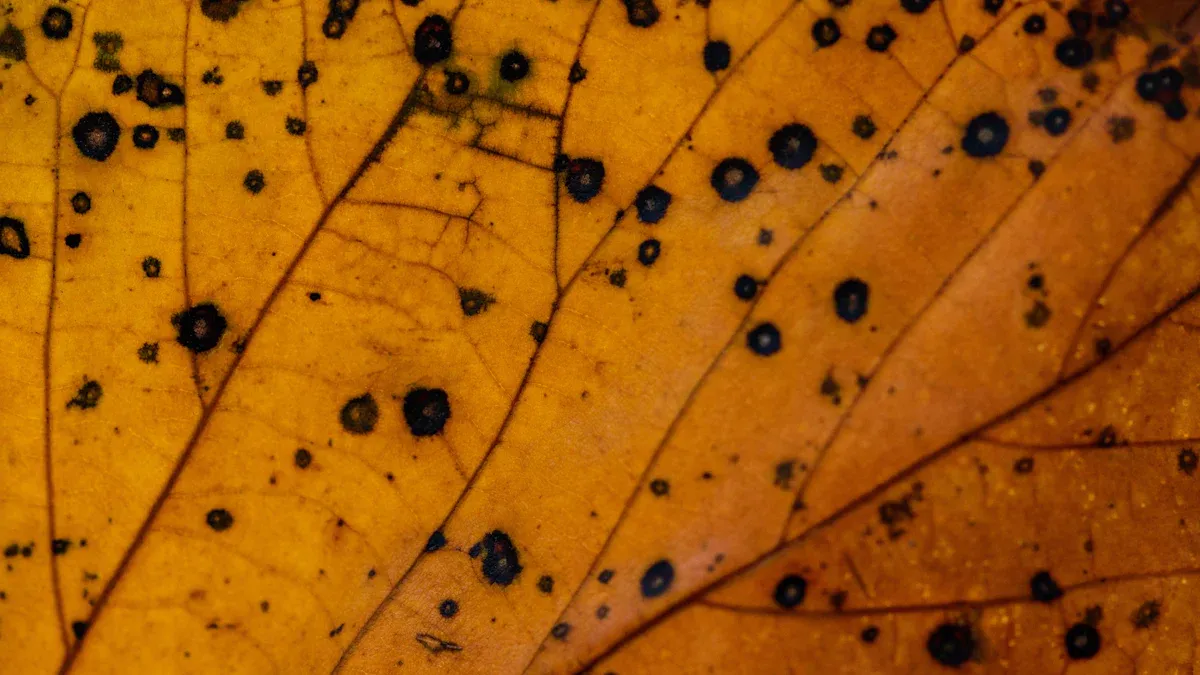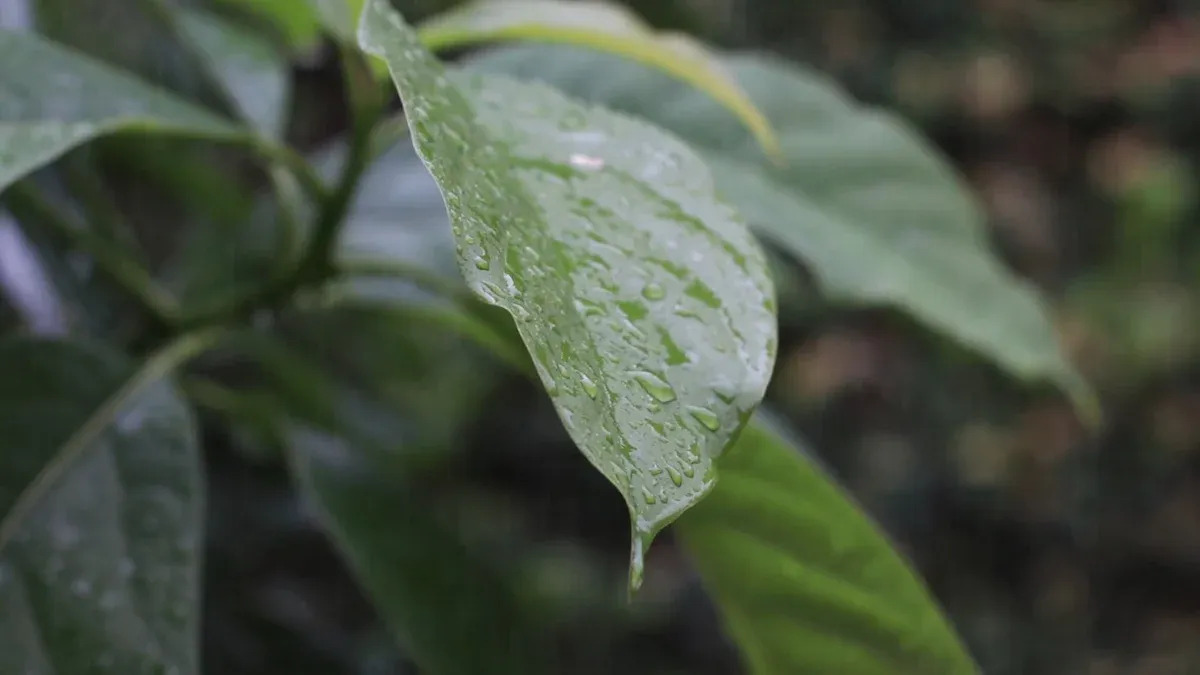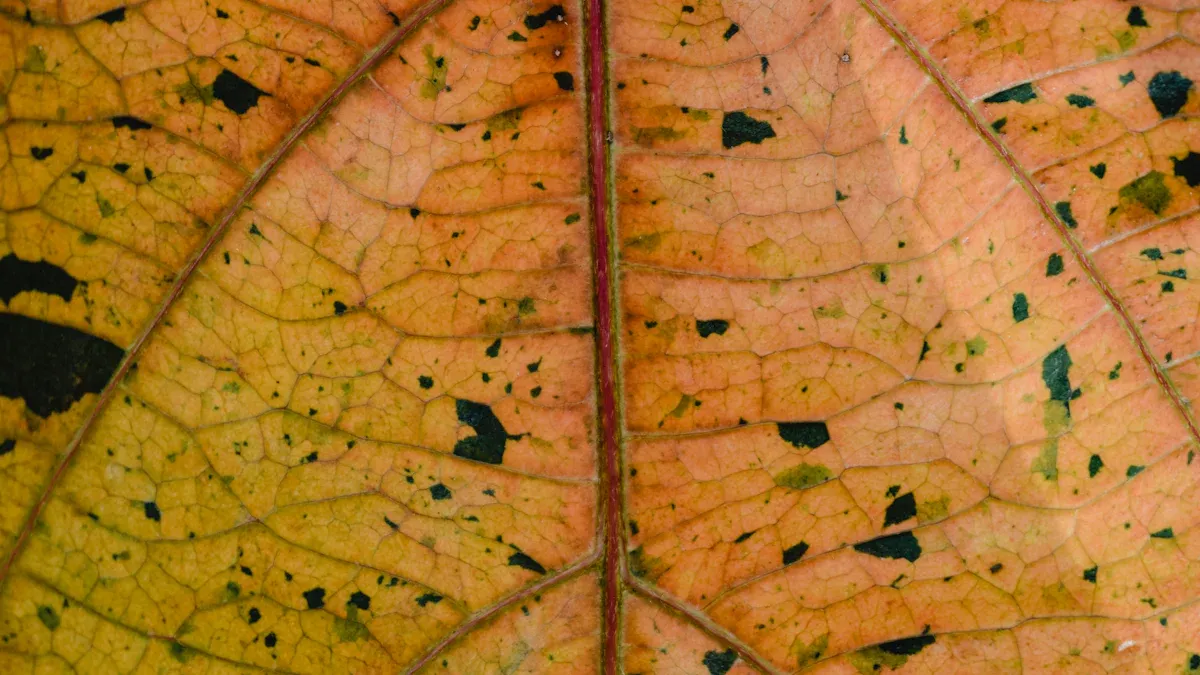
Loquat plants can bring beauty and fruitfulness to your garden. However, they can also face various diseases that threaten their health. Recognizing these issues early is crucial. When you identify loquat diseases promptly, you can take action to protect your plants. This proactive approach helps ensure your loquats thrive and produce delicious fruit for years to come.
Key Takeaways
Identify loquat diseases early to protect your plants. Regular inspections help catch issues like fire blight and leaf spot before they spread.
Practice proper watering techniques. Water only when the top inch of soil feels dry to prevent root rot and other moisture-related diseases.
Maintain good sanitation in your garden. Remove fallen leaves and debris to reduce the risk of disease and keep your loquat plants healthy.
Use cultural practices like pruning and ensuring good drainage. These methods promote healthy growth and reduce the likelihood of disease.
Stay proactive by monitoring your plants regularly. Look for signs of pests and diseases to take action quickly and ensure your loquats thrive.
Identify Loquat Diseases

Identifying loquat diseases early is essential for maintaining the health of your plants. When you spot issues promptly, you can take action to treat them effectively. This proactive approach can significantly enhance the survival rates of your loquat trees. Here are some common diseases that affect loquat plants:
Fire Blight
Fire blight is a bacterial disease caused by Erwinia amylovora. It primarily affects blossoms and young shoots. You may notice discolored blossoms that appear water-soaked, turning gray-green to black. Infected young fruits may shrivel and remain attached to the tree. The leaves adjacent to infected areas will also turn brown to black and droop.
Symptom/Stage | Description |
|---|---|
Blossom Blight | Discolored blossoms may remain attached to the tree. |
Young Fruit Infection | Small, discolored, shriveled fruits that stay attached. |
Adjacent Leaves | Infected tissue turns brown to black and shrivels. |
Shepherd’s Crook | Young shoots bend at the tip, resembling a shepherd’s crook. |
Cankers | Sunken, discolored areas on mature woody tissue. |
Bacterial Ooze | Infected tissue may ooze bacteria during high humidity, aiding in spread. |
Leaf Spot
Leaf spot is another common issue, often caused by fungal agents like Pestalotiopsis vismiae. You might see circular spots on the leaves, which can lead to premature leaf drop. Regular inspections can help you catch this disease early.
Fungal Agent | Description |
|---|---|
Pestalotiopsis vismiae | A pathogenic fungus that causes leaf spots and fruit rot. |
Metschnikowia pulcherrima | A biocontrol agent against Pestalotiopsis vismiae, relevant in managing leaf spot disease. |
Root Rot
Root rot occurs when loquat plants sit in overly saturated soil. This condition leads to slow or stunted growth. You may notice wilting leaves, especially after watering. Yellowing leaves often start from the oldest ones near the soil. If left unchecked, browning and falling off of leaves can occur.
Avoid heavy clay or overly saturated soils to prevent root rot.
Ensure good water drainage for the health of loquat plants.
Loquats thrive in well-drained soil to prevent root rot.
Bark Canker
Bark canker is a fungal disease that affects the bark of loquat trees. It can be caused by various pathogens from families like Bionectriaceae and Nectriaceae. Environmental factors such as frost, drought, and heat stress can predispose your loquat plants to this disease.
Fungal pathogens associated with bark canker include members from the families Bionectriaceae, Nectriaceae, Botryosphaeriaceae, and Ceratocystidaceae.
Environmental factors include frost, drought, water, and heat stresses.
By understanding these common diseases, you can better protect your loquat plants. Regular inspections and prompt action can help maintain their health and productivity.
Symptoms of Loquat Diseases

Wilting and Blackening Leaves
When you notice wilting and blackening leaves on your loquat plants, it can signal serious issues. Fire blight is a common culprit. Infected leaves wilt, blacken, and often remain attached to the branches. You may also see branches dying from the tips, and cankers may appear on the bark.
Disease | Symptoms | Cause |
|---|---|---|
Fire Blight | Leaves wilt, blacken, and remain attached; branches die from tips; cankers appear. | Bacterium (Erwinia amylovora) |
Routine inspections are crucial. By checking your plants regularly, you can catch these symptoms early and take action.
Spots and Blights
Spots and blights on loquat leaves can indicate fungal infections. You might see various types of spots, which can lead to leaf drop if not addressed. Common symptoms include:
Type of Spot/Blight | Description |
|---|---|
Brown Spots | Infected plants exhibit brown spots on the stem and leaves. |
Necrotic Lesions | Large necrotic lesions (more than 20 mm) frequently appear along the leaf margin or dorsal surface. |
Water-soaked Spots | Necrotic spots appear water-soaked, irregularly shaped, and bordered by a tan halo. |
These visual indicators help you identify loquat diseases early. Regular monitoring of your plants can prevent further damage.
Rotting Roots
Rotting roots can severely affect your loquat plants. This condition often arises from overwatering or poor drainage. You may observe several signs:
Wilting leaves: The plant may appear thirsty and wilt even after watering.
Yellowing leaves: This often starts with the oldest leaves and those closest to the soil.
Water-soaked lesions: These can appear near the petiole or stem, especially close to the soil.
If you notice these symptoms, it’s essential to act quickly. Check your watering practices and ensure your soil drains well.
By understanding these symptoms, you can better protect your loquat plants. Regular inspections and prompt action can help maintain their health and productivity.
Causes and Risk Factors
Overwatering Issues
Overwatering is a common problem for loquat plants. You may think that giving your plants extra water helps them thrive. However, loquats are sensitive to waterlogged soil. Excess moisture can lead to root rot and other diseases. To prevent these issues, ensure proper drainage in your garden. Here are some key points to remember:
Loquats thrive in well-drained soil.
Water only when the top inch of soil feels dry.
Avoid heavy clay soils that retain too much water.
Pest Infestations
Pests can also pose significant risks to your loquat plants. Insects such as aphids, spider mites, and scale can weaken your trees. They feed on the sap, which can lead to stunted growth and increased vulnerability to diseases. Regularly inspect your plants for signs of pests. If you notice any, take action quickly. Here are some tips to manage pest infestations:
Use insecticidal soap or neem oil for treatment.
Encourage beneficial insects like ladybugs to control pests naturally.
Keep your garden clean to reduce pest habitats.
Poor Sanitation
Maintaining good sanitation practices is crucial for preventing diseases. Fallen leaves and debris can harbor pathogens that affect your loquat plants. By keeping your garden tidy, you can minimize the risk of disease. Here are some sanitation tips:
Remove fallen leaves and fruit regularly.
Clean your gardening tools after each use.
Avoid overcrowding plants to improve air circulation.
Environmental factors also contribute to the development of diseases. For example, low day temperatures during the fruit color break can lead to purple spot in loquat fruit. Moisture levels and sunlight exposure play significant roles as well. Research shows that early-maturing orchards can experience a higher incidence of purple spot, particularly at the beginning of the harvest, with up to 60% of the fruit affected. Keeping direct sunlight off the fruit can help reduce this disorder.
By understanding these causes and risk factors, you can take proactive steps to protect your loquat plants. Regular monitoring and proper care will help ensure their health and productivity.
Treatment Options
When you discover diseases affecting your loquat plants, prompt action is essential. Here are effective treatment options to help you manage these issues.
Removing Infected Parts
Start by inspecting your loquat plants regularly. If you find any infected branches, leaves, or fruits, remove them immediately. This practice helps prevent the spread of diseases. Use clean, sharp pruning shears to make clean cuts. Dispose of the infected parts properly to avoid re-infection.
Chemical Treatments
For more severe cases, consider chemical treatments. Acetylsalicylic acid is a cost-effective option that has shown effectiveness against common loquat plant diseases. Always follow the manufacturer’s instructions for application rates and timing. Here are some additional chemical treatments you might consider:
Fungicides: Use fungicides specifically designed for fungal infections like leaf spot and bark canker.
Bactericides: Apply bactericides to combat bacterial diseases such as fire blight.
Cultural Practices
Implementing good cultural practices can significantly reduce the risk of disease. Here are some recommended strategies:
Plant in well-drained soils to prevent root rot.
Provide moderate to regular amounts of water, ensuring the soil dries out between watering.
Thin branches to allow light into the tree’s interior, promoting healthy growth.
Remove excess fruit to prevent limb breakage.
During the first 1 to 2 years after planting, prune young trees by tipping shoots to encourage branching. For mature trees, selectively prune to maintain a manageable height. This practice facilitates care and harvest.
Regularly inspect your plants for signs of pests and diseases. Ensure proper watering to avoid tree stress. Pruning helps maintain air circulation and removes diseased branches. Encourage natural predators to control pest populations effectively.
By combining these treatment options, you can effectively manage loquat plant diseases and promote healthy growth.
Prevention Tips
Proper Watering Techniques
Proper watering is crucial for the health of your loquat plants. Here are some effective strategies to follow:
Water Consistently: Keep the soil evenly moist. This practice helps prevent conditions that favor fungal growth.
Watch for Signs: Yellowing leaves indicate overwatering, while wilting suggests your plant needs more water.
Deep Watering: During hot weather, water deeply and slowly. This method helps your loquat plants withstand heat stress.
Use Drip Hoses: A drip hose can minimize water splashing, reducing the risk of fungal diseases.
By following these techniques, you can significantly reduce the incidence of diseases in your loquat plants.
Soil Management
Soil management plays a vital role in preventing loquat plant diseases. Consider these practices:
Ensure Proper Drainage: Plant your loquats on a slope or in raised beds with sandy, well-draining soil.
Adjust Watering Seasonally: Increase watering frequency in summer and reduce it during winter dormancy.
Amend Soil: Use organic matter like compost to improve clay-heavy soil for better drainage.
Choose the Right Location: Select a site with full sun to partial shade and protect your plants from strong winds.
Implementing these soil management practices will create a healthier environment for your loquat plants.
Regular Monitoring
Regular monitoring is essential for early detection of diseases and pests. Here’s how you can stay proactive:
Inspect Frequently: Check your loquat trees regularly for any signs of pests or diseases. Early treatment can prevent further damage.
Be Observant: Look for changes in leaf color, wilting, or unusual spots. These signs can indicate underlying issues.
Stay Informed: Keep yourself updated on common diseases and pests that affect loquat plants.
By committing to regular monitoring, you can protect your loquat plants and ensure their long-term health.
To keep your loquat plants healthy and prevent diseases, follow these key practices:
Prune your trees in late winter or early spring. This action shapes the tree and improves air circulation.
Monitor for pests like aphids and scale insects. Address any issues promptly to avoid further damage.
Remove dead leaves and pruning debris regularly. This practice helps manage pest problems effectively.
By staying proactive, you can enjoy thriving loquat plants that produce delicious fruit for years to come! 🍑
FAQ
What are the signs of fire blight in loquat plants?
You can identify fire blight by looking for discolored blossoms, wilting leaves, and blackened tips on young shoots. Infected fruits may shrivel and remain attached to the tree.
How can I prevent root rot in my loquat trees?
To prevent root rot, ensure your soil drains well. Water only when the top inch of soil feels dry. Avoid heavy clay soils that retain excess moisture.
What pests commonly affect loquat plants?
Common pests include aphids, spider mites, and scale insects. These pests feed on sap, weakening your trees and making them more susceptible to diseases.
How often should I inspect my loquat plants?
Inspect your loquat plants at least once a week. Regular checks help you catch any signs of disease or pests early, allowing for prompt action.
Can I use organic treatments for loquat diseases?
Yes, you can use organic treatments like neem oil or insecticidal soap. These options effectively manage pests and diseases while being safe for the environment.

